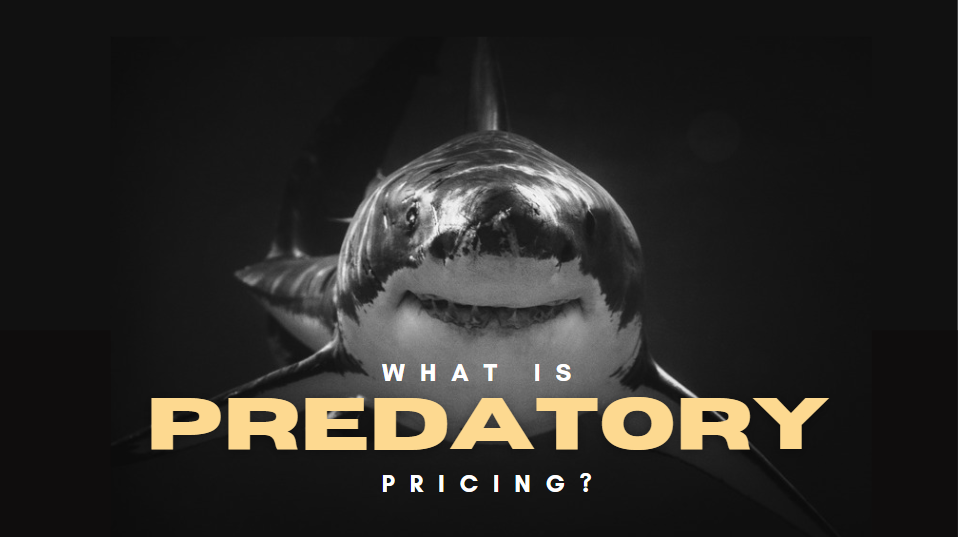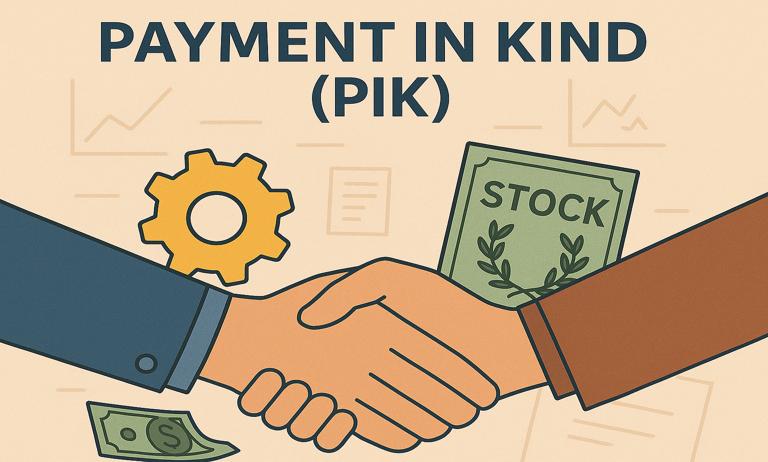Decentralized Finance (DeFi): Opportunities Beyond
the Hype
Envision a world where you can trade
assets, borrow money, and earn interest without ever having to go to a bank or
fill out any paperwork. That is exactly what Decentralized Finance (DeFi)
aims to achieve. Thanks to blockchain technology, DeFi uses smart contracts,
self-executing code that operates on open networks like Ethereum, instead of
traditional financial middlemen. It is quick and available to anyone with an
internet connection, regardless of where you live or your credit score.
DeFi's popularity has skyrocketed in recent years. Investors have poured
billions into new tokens, early adopters have made (and lost) fortunes
overnight, and headlines have declared it as the financial industry's future.
But it's easy to lose sight of what's valuable beneath all the glitz and
glamour.
By taking a step back from the chaos, this article explores the real
opportunities that DeFi offers. Putting aside the speculation and eye-catching
returns, we'll look at how DeFi might revolutionize financial services accessibility,
empower individuals, and innovate finance in ways that traditional finance
simply cannot.
What Is DeFi?
DeFi, or decentralized finance, is a new way to
manage money that doesn't need banks, brokers, or other middlemen. People can
do financial transactions directly with each other using DeFi's blockchain
technology, which does not involve any central authority or financial
institutions. DeFi makes it possible to lend, borrow, trade, and earn interest
thanks to peer-to-peer networks and smart contracts. Smart contracts are
self-executing code that operates on platforms like Ethereum.(1)
Think of smart contracts as digital agreements that carry out transactions on
their own when certain conditions are met. This makes the system work better
and be more open, and it gets rid of the need for trust from third parties.
DeFi apps, or dApps, are built on blockchain protocols and are run by
communities through DAOs (Decentralized Autonomous Organizations). In these
organizations, people use tokens to make decisions together. (2)
The most popular DeFi platforms include: (3)
·
Uniswap- The
decentralized exchange Uniswap allows users to trade cryptocurrencies without
the intervention of a central authority.
·
Aave- It is a lending
protocol that uses cryptocurrencies as security to let users borrow money or
earn interest.
·
Compound- A DeFi lending
protocol that allows users to earn interest at rates that adapt according to
supply and demand.
DeFi suits the
modern era by enabling anyone to access financial services freely, without
needing permission from traditional institutions. It is open to anyone with an internet connection and a
cryptocurrency wallet. Notwithstanding its promise, the technology is still in
its infancy and vulnerable to risks such as smart contract fraud and market
volatility.
The Hype Cycle
Between 2020 and 2022, DeFi transformed
from an experiment to a financial mania. During the period known as "DeFi
Summer," users turned to platforms that used yield farming strategies to achieve
remarkable returns, which sometimes even exceeded a 1000% annual percentage
yield.(4) Investors would be rewarded with newly created tokens if they
locked their cryptocurrency using platforms like Compound or Uniswap. For a
while, at least, it was quick, thrilling, and highly profitable.
However, chaos accompanied the gold rush. Numerous initiatives were started
with nothing more than eye-catching websites and lofty profit targets. Rug
pulls, in which developers disappeared with investor money, became sadly
widespread. The market was overrun with unsustainable models that distributed
rewards by printing more tokens rather than using actual revenue. (5)
After the excitement
subsided, the gaps became apparent. Protocol hacks, smart contract errors, and
security flaws cost users billions of dollars. When regulatory bodies began to
take notice, they started investigating fraud and issuing warnings. According
to Forbes, “As of March 31, 2025[HA1] the total value locked in DeFi sits roughly 47% below its 2021–22 peak. This divergence
suggests that hype alone won't bring the capital back. What might? A move
toward real, sustainable yield.” (6)
Despite the difficulties,
this cycle taught valuable lessons. It underlined the need for more intelligent
regulation, enhanced user protections, and sustainable yield. The initial
enthusiasm has faded, but the foundation for a more mature DeFi ecosystem is
already being laid.
Key Components of DeFi
Decentralized Finance
(DeFi) is more than just the latest trend in the blockchain space; it
represents a new global paradigm that is shifting how the world conducts
financial transactions. At its essence, DeFi disrupts legacy banking systems
and swaps them out for blockchain-based counterparts that are open, permissionless,
and transparent. But what to make of this ecosystem? Let’s dissect the key
elements that are also powering DeFi’s rise.
1.
Decentralized Exchanges: Many of the people who are staking AVAX have been
trading on decentralized exchanges (DEXs) like Uniswap and SushiSwap, which
allow swapping of cryptocurrencies directly from your wallet, free from a
centralized authority. No intermediaries between you and the funds you are
buying, no waiting days until funds are available to withdraw, no withdrawal
fees you must pay, and no minimum withdrawal amount. (2)
2.
Lending
& Borrowing Protocols: Decentralized Lending and Borrowing Protocols like
Aave and Compound allow for “earning interest” or “taking a loan” on one’s
crypto assets after they lock them up. They take away the credit check, they
perform the instant settlement, making finance even more inclusive. (2)
3.
Stablecoins:
The
market swings all over the place, having stablecoins like USDT and DAI around
is honestly a lifesaver. They keep your money from doing backflips every five
seconds. They’re the backbone of DeFi, whether you’re making swaps or just reserving
your cash for a while, you need stablecoins. (2)
4.
Yield Farming & Liquidity Mining: Yield Farming is like putting your crypto to work. You
can lend or stake your tokens on DeFi platforms and earn rewards, much like
earning interest from a bank, but in a digital form. Liquidity mining is when
you help crypto exchanges by adding funds, and in return, you get paid with
fees and bonus tokens. It's a win-win: your assets aren’t just sitting, they're
earning. (7)
5.
Derivatives:
In DeFi, derivatives are smart contract-based instruments that let users manage
risk, speculate on asset prices, and gain exposure without direct ownership.
They support decentralized trading of futures, options, and more, all with
transparency and automation. (8)
6.
Decentralized
Applications and Blockchain Technology: Together, they enable secure, smooth
transactions, tamper-proof interactions across the whole system. (7)
Together, these
components form a dynamic, user-driven financial system that’s rewriting the
rules of money.
In addition to
these core types, DeFi landscape is constantly evolving with new protocols
emerging in areas like:
·
Cross-chain
bridges: Cross-chain bridges connect isolated blockchain ecosystems, enabling
seamless assets and data transfers between networks like Ethereum and Solana.
They foster interoperability and liquidity across DeFi platforms. (9)
·
Insurance
platforms / Programmable finance: DeFi insurance platforms like Nexus Mutual
use smart contracts to offer coverage against risks such as smart contract
exploits and protocol failures. These systems automate claims and promote
transparency. (10)
·
Real-world
asset tokenization / Asset Management: Tokenization
converts physical assets, like real estate or commodities, into
blockchain-based tokens, allowing fractional ownership and efficient asset
management. This bridges traditional finance with decentralized markets. (11)
·
Identity
Decentralization and Credit Scoring: Decentralized identity systems give users
control over their data, while blockchain-based credit scoring uses smart
contracts and alternative data to assess creditworthiness transparently and
inclusively. (12)
Limitations and Pitfalls
DeFi, though promising,
is not all roses. However, with the increase in the ecosystem, a number of
concerns are emerging in terms of scalability, security, and usability.
1.
Scalability
and High Gas Fees
Most DeFi platforms operate on Ethereum, a blockchain that, despite upgrades,
still grapples with network congestion and high transaction (gas) fees as it
tries to scale in response to rising usage. Simple actions such as exchanging
tokens or staking assets are high-cost and slow. Layer 2 solutions like
Optimistic and ZK-Rollups, which have the potential to lower fees, are
notoriously difficult to build and not yet widely used. (13)
2.
Regulatory
Uncertainty
DeFi exists in a legal gray area. With no overarching authority, it is often
unclear who’s in charge when things go awry. Governments around the world are
trying to figure out how, or whether, to regulate DeFi without squelching
innovation. This uncertainty may be risky for both the users and the
developers, especially since some regulators have started clamping down on
unregistered securities and unlawful behavior.
3.
User
Experience and Technical Barriers
Passages on DeFi services often ask users to keep track of private keys, parse
clunky interfaces, and master new terminology. This may feel overwhelming and
carries higher risks if not approached carefully. One misstep, such as sending money to the
wrong address, can lead to a loss that cannot be undone. (14)
4.
Security
Risks
Smart contracts are potent, however fragile. Bugs in code or inadequately
audited protocols have resulted in multi-million-dollar exploits that skewed
user funds and confidence in the system. Cross-chain bridges, which are used to
transfer assets between blockchains, have also emerged as a common target for
hackers. (14)
Such constraints
underscore the necessity for infrastructure that performs better, clearer
regulation, and more user-friendly design to bring DeFi within reach and secure
it at the same time.
The Road Ahead
As DeFi’s early hype is settling, the road ahead
is looking clearer and more exciting. The next wave, or as it’s sometimes
called, DeFi 2.0, is about fixing the flaws of the first generation and opening
up new possibilities.
Emerging
Trends
One big one is the
emergence of Layer 2s such as Optimism and zk-Rollups that cut out steep gas
profiles and speed up transaction times by processing data on a parallel chain
to the main Ethereum chain. This scalability is crucial for mass adoption.
Another major development
is the tokenization of Real-World Assets (RWAs), like properties, commodities,
or intellectual property. By tokenizing these real-world assets, DeFi imparts
fluidity, accessibility, and international tradeability to these assets. The
market for tokenized assets is expected to span $10 trillion by the year 2030. (15)
Integration with Traditional Finance
DeFi has ceased to be a sideline operation. Hybrid models, increasingly, will
blend the centralized finance (CeFi) styles with DeFi. Banks and institutions
are embarking upon blockchain-based loans and custody services for tokenized
securities, attempting to bridge the gap between the old and the new. (15)
Role of Governments and Institutions
Governments are in the process of setting up anti-money laundering (AML) and
know-your-customer (KYC) requirements. They are also attempting to create, for
the first time, the concept of regulatory sandboxes to safely test DeFi
innovations. These efforts are an attempt at finding a balance between
promoting innovation and ensuring consumer protection, highlighting an
increasing institutional interest in steering the future of decentralized
finance. (16)
Thus, it's all about maturity, integration, and innovation. If DeFi manages to
balance decentralization with usability and compliance, maybe traditional
finance will have to coexist with it or may become defined finance.
Conclusion
DeFi is more than a
speculative playground; it’s a blueprint for a more inclusive, transparent, and
programmable financial future. While early excitement brought volatility and
risk, it also sparked innovation that continues to evolve. The real value of DeFi
lies in its potential to democratize access to financial services, automate
complex processes, and reduce reliance on centralized institutions. To unlock
this potential, we need responsible innovation, user education,
and clear regulatory frameworks that protect users without stifling
progress. As DeFi matures, its impact could extend far beyond crypto, reshaping
finance for generations to come.
Sources:
1. Investopedia,
What is Decentralized Finance (DeFi) and how Does it work?, October 25, 2024
2. Blockchain
Council, What is DeFi? , April 04, 2025
3. Blockchain
Council, Top 5 DeFi Platforms, October 27, 2023
4. Inside
Bitcoins, What is Yield Farming? Top Yield Farming Platforms in 2025, July 29,
2025
5. Coin
Telegraph, Pulling the rug: DeFi investment hype fuels rise in crypto exit
scams, August 24, 2020
6. Forbes,
Real Yield or Real Illusion? The Next Chapter of DeFi Depends On This One Shift, June 16,2025
7. Analytics
Insight, Decentralised Finance (DeFi): Opportunities, challenges and Policy
Implications, November 05, 2024
8. Haders,
Deciphering the World of DeFi Derivatives
9. CCN,
What Are Cross Chain Bridges, January 08, 2025
10. Coins
Creed, From Nexus Mutual to Cover:Analyzing Top FrFi Insurance Platforms,
February 29, 2024
11. Algorand
Foundation, Real World Asset Tokenization: A Comprehensive Guide, October 03,
2024
12. Chain,
Disrupting Traditional Credit Scoring Systems With Blockchain, February 05,
2025
13. Smart
Liquidity, Scalability Limitations of Current DeFi Protocols : Challenges and
Solutions, March 03, 2025
14. CFA
Institute, DeFi-ing the Rules: Five Opportunities and Five Risks of
Decentralized Finance, June 07,2022
15. On
the Node, The Rise of Decentralized Finance (DeFi) and its Impact on the Global
Financial Sector 2025, June 06, 2025
16. World
Economic Forum, Digital Assets Regulation: Insights from Jurisdictional
Approaches, October 2024
Disclaimer: This article is for educational purposes only and is based on publicly available sources. While efforts have been made to ensure accuracy, the content should not be considered professional advice.








